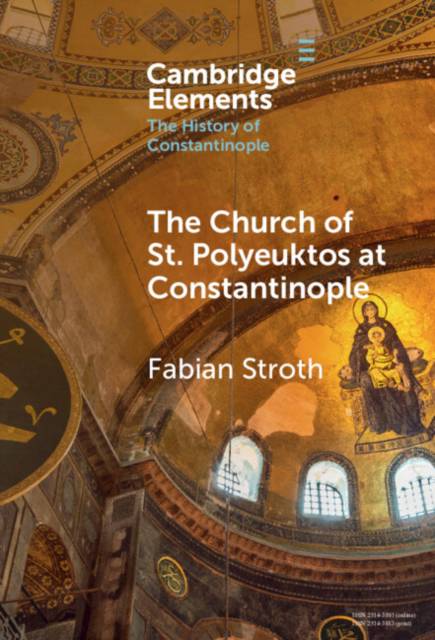
- Afhalen na 1 uur in een winkel met voorraad
- Gratis thuislevering in België vanaf € 30
- Ruim aanbod met 7 miljoen producten
- Afhalen na 1 uur in een winkel met voorraad
- Gratis thuislevering in België vanaf € 30
- Ruim aanbod met 7 miljoen producten
Zoeken
Omschrijving
The Church of St. Polyeuktos is one of the most magnificent, but also most peculiar architectural achievements in Byzantine Constantinople. The accidental rediscovery of the building during construction work in Istanbul in the 1960s is legendary and considered one of the most sensational finds in Byzantine archaeology. Built by the aristocrat Lady Anicia Juliana, the reconstruction of the structure and the interpretation of its strange forms continue to challenge scholars today. The building gave rise to a whole series of archaeo-historical narratives, in which the City's byzantine protagonists and major monuments were woven into a coherent plot. This Element on the archaeology of St. Polyeuktos takes a closer look at these narratives and subject them to critical examination. In the end, the study of St. Polyeuktos will tell us as much about Byzantine architectural history in the second half of the twentieth century as about early Byzantine architecture itself.
Specificaties
Betrokkenen
- Auteur(s):
- Uitgeverij:
Inhoud
- Aantal bladzijden:
- 90
- Taal:
- Engels
- Reeks:
Eigenschappen
- Productcode (EAN):
- 9781009517065
- Verschijningsdatum:
- 21/03/2024
- Uitvoering:
- Hardcover
- Formaat:
- Genaaid
- Afmetingen:
- 152 mm x 229 mm
- Gewicht:
- 290 g

Alleen bij Standaard Boekhandel
+ 209 punten op je klantenkaart van Standaard Boekhandel
Beoordelingen
We publiceren alleen reviews die voldoen aan de voorwaarden voor reviews. Bekijk onze voorwaarden voor reviews.











